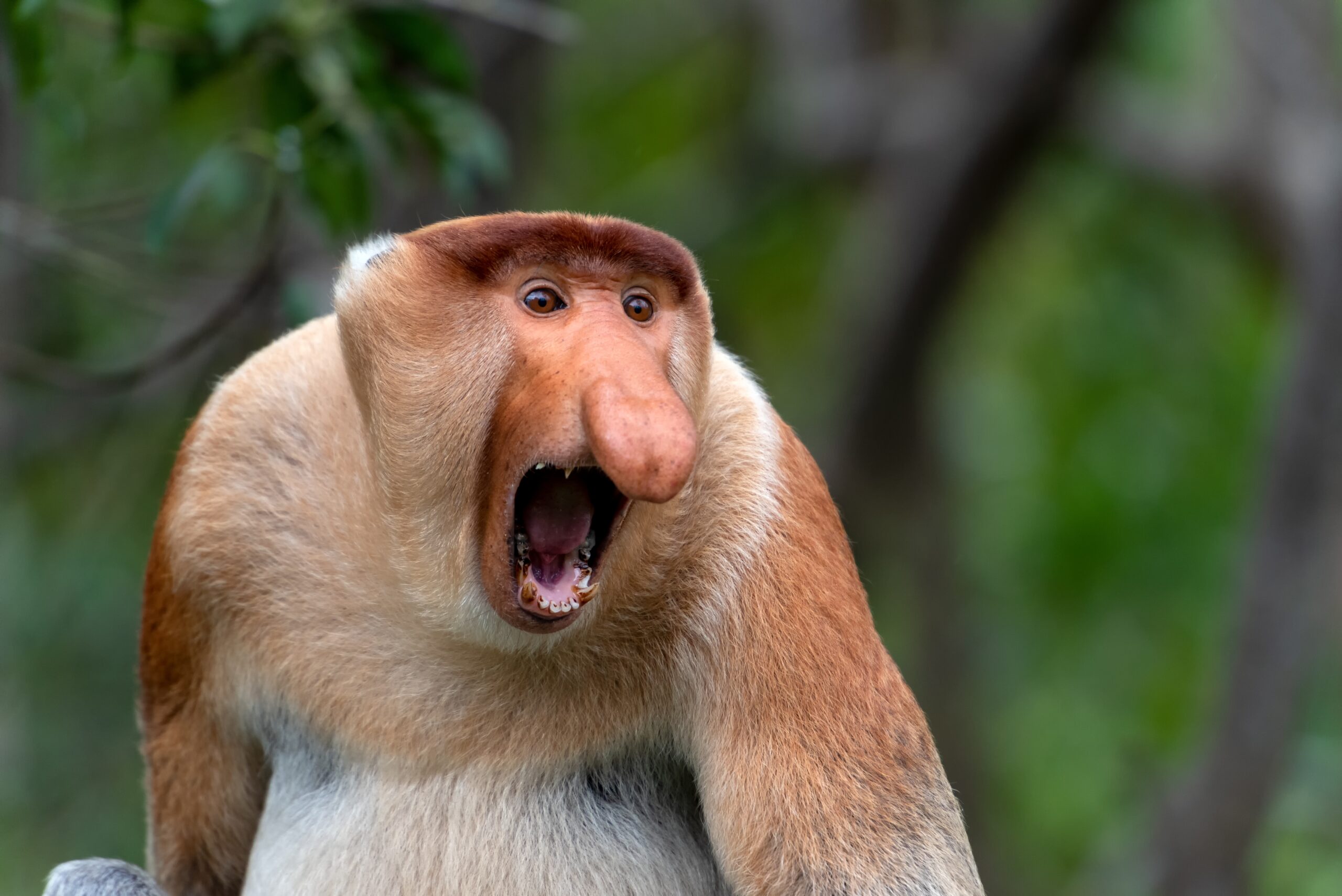Imagine creatures so extraordinary they seem to have leapt straight out of a science fiction film. The natural world is filled with animals whose appearances are so bizarre and intriguing, they challenge our perception of reality itself.
From the deep seas to lush jungles, these creatures captivate with their surreal and otherworldly beauty. Here we explore such remarkable animals, each worthy of a starring role in any sci-fi narrative.
1. Axolotl
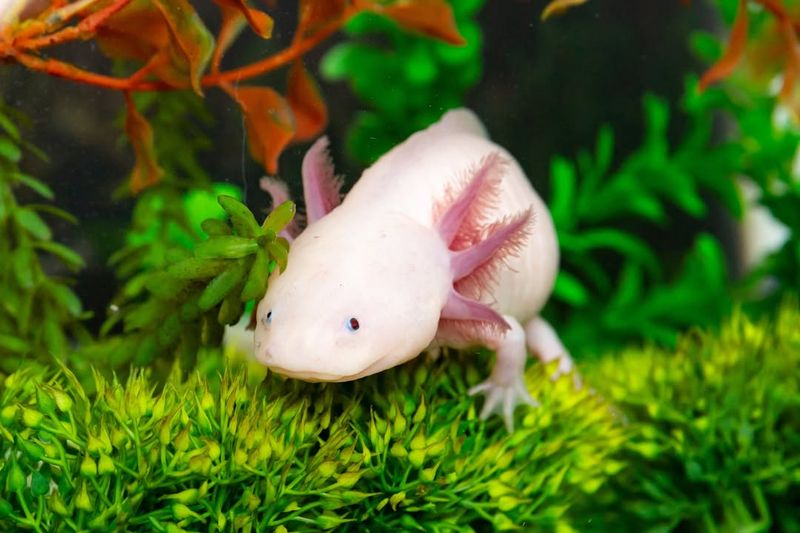
Hidden beneath the waters of Mexico City’s ancient lakes resides a creature with a perpetual smile: the Axolotl. This aquatic salamander is known for its unique ability to regenerate limbs, a fascinating trait even among nature’s oddities. In a way, some of the coolest animals out there!
Axolotls, often referred to as “walking fish,” are not fish at all but amphibians. Their feathery external gills and the soft pink hue of their skin make them look like something out of a whimsical storybook. Despite their endearing appearance, axolotls face severe threats from urban sprawl and pollution.
Conservation efforts are crucial in preserving these charming beings. If you’re ever in Mexico City, a visit to see these creatures is a must. They’re a testament to the wonders of evolution, showcasing a blend of features that science fiction could hardly dream up.
2. Blobfish
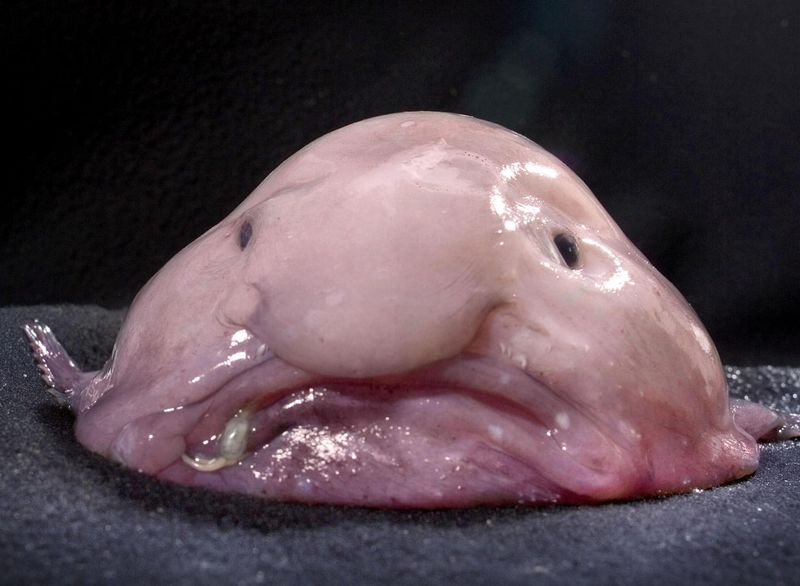
At first glance, the blobfish might seem more like a cartoon character than a real animal. Found in the deep waters off the coasts of Australia and New Zealand, this unique creature is often labeled as the world’s ugliest fish.
Its appearance changes significantly when brought to surface pressure, becoming a saggy, gelatinous mass. Despite its unflattering reputation, the blobfish is perfectly adapted to its high-pressure habitat, where its jelly-like body helps it stay buoyant.
Life as a blobfish is uncomplicated; it floats around, conserving energy by not actively hunting, waiting for prey to drift into its mouth. This minimalist lifestyle reflects an evolutionary marvel, making the blobfish a true wonder of the deep sea. It’s a reminder that beauty is subjective, and evolution tailors creatures to their environments in fascinating ways.
3. Glass Frog
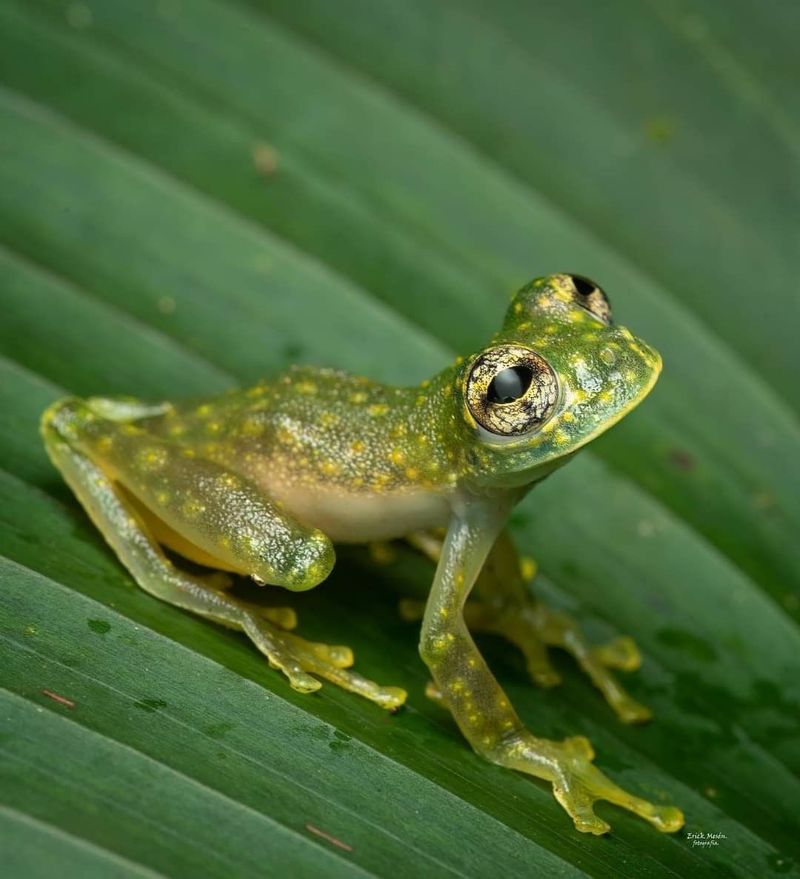
High in the cloud forests of Central and South America, the glass frog offers a window into one of nature’s most intriguing spectacles. Its skin is so transparent that you can see right through to its internal organs.
These tiny frogs, often no larger than a fingernail, have a bright green coloration that camouflages them amidst the foliage. Their transparent skin serves as an excellent defense mechanism, allowing them to blend seamlessly into their environment.
The glass frog’s surreal transparency and delicate form make it a captivating subject for wildlife enthusiasts and photographers alike. Observing a glass frog in its natural habitat is like peering into a living, breathing x-ray machine.
It’s a vivid example of how evolution can produce creatures that defy our expectations of the animal kingdom.
4. Mantis Shrimp
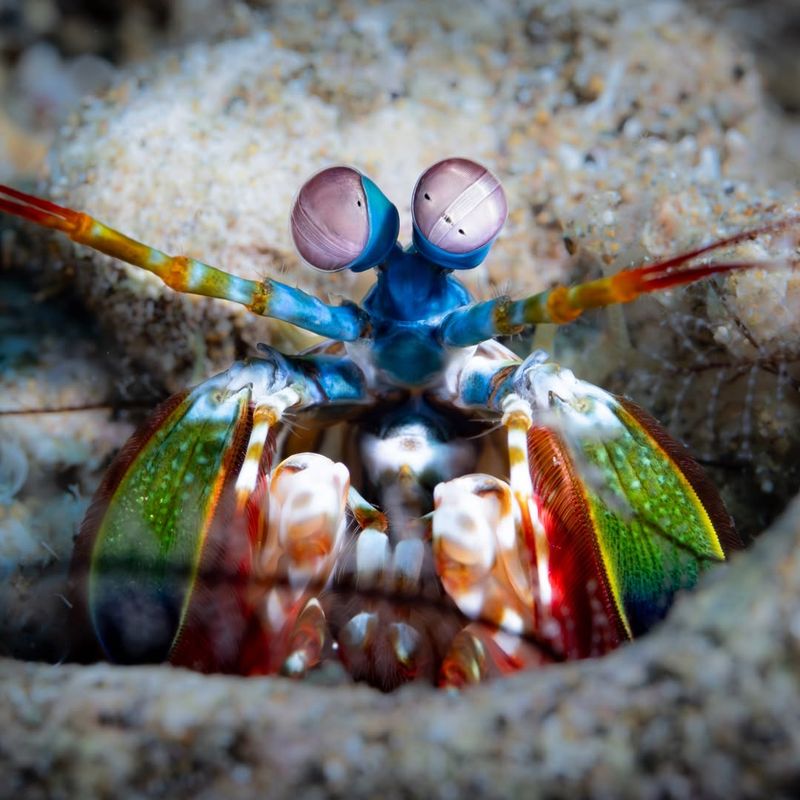
In the colorful world of coral reefs, the mantis shrimp stands out as a master of both vision and combat. Unlike any other creature, it possesses the most complex eyes in the animal kingdom, capable of seeing polarized light and having 16 color-receptive cones.
This crustacean is also known for its powerful punch, used to break the shells of its prey with the speed of a bullet. The mantis shrimp’s vibrant colors and extraordinary abilities make it a fascinating subject of study.
Despite its small size, it commands a presence that rivals even the fiercest predators. Its incredible adaptations leave scientists in awe and spark the imagination of those who dream of alien worlds. The mantis shrimp’s vibrant palette and unique skills are a vivid reminder of the wonders that thrive beneath the waves.
5. Star-Nosed Mole
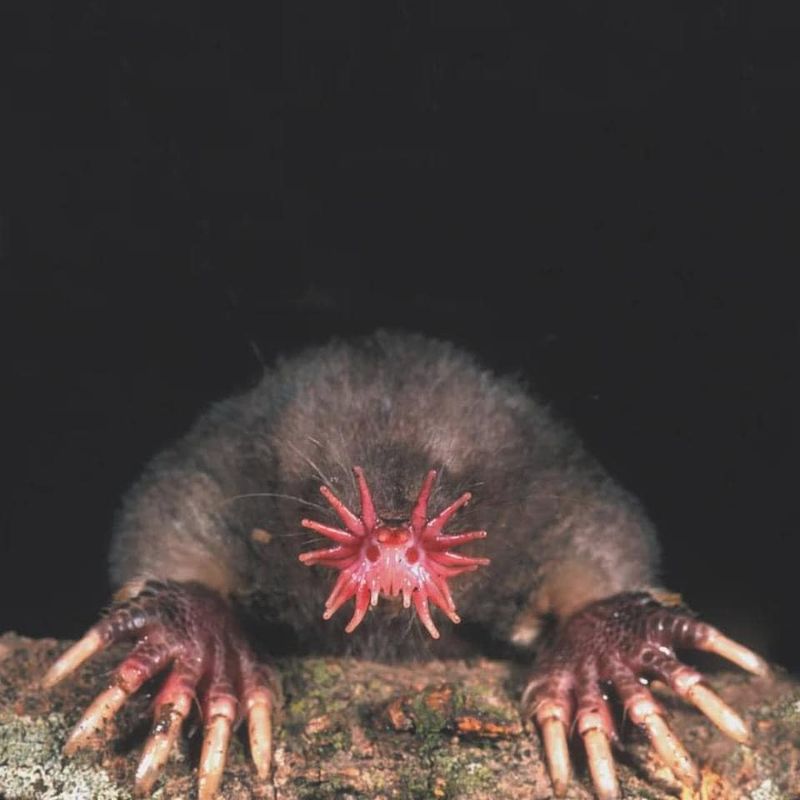
Emerging from the underworld of moist, lowland areas, the star-nosed mole is a creature that seems almost otherworldly. Famous for its bizarre star-shaped nose, this mole is not only strange-looking but also incredibly efficient.
The 22 fleshy appendages surrounding its snout help it detect prey with astonishing speed, making it one of the fastest foragers in the animal kingdom. These sensory tentacles are a marvel of evolutionary adaptation, allowing the mole to thrive in its dark, subterranean world.
Although it may not win any beauty contests, the star-nosed mole’s peculiar appearance serves as a reminder of nature’s ingenuity. Its ability to navigate and hunt in complete darkness epitomizes the diverse solutions evolution has crafted for survival.
It’s a fascinating blend of oddity and efficiency, capturing the imagination of nature enthusiasts.
6. Leafy Seadragon
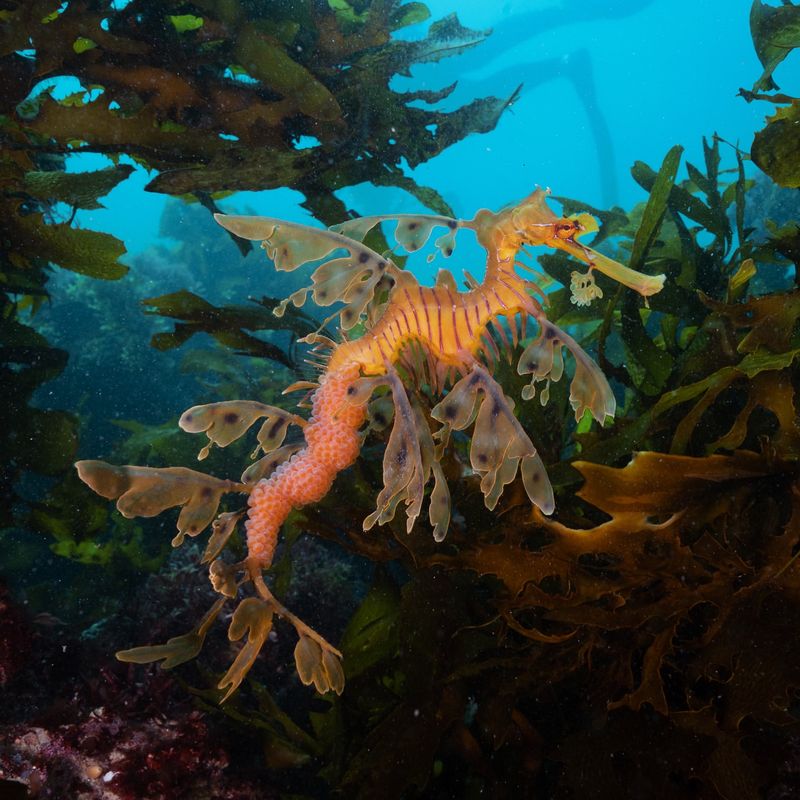
Floating through the kelp forests of southern Australia, the leafy seadragon is a marine creature that exemplifies elegance and camouflage. Its body is adorned with leaf-like appendages, allowing it to blend seamlessly with the underwater vegetation.
Though it resembles a piece of drifting seaweed, the leafy seadragon is a fish, related to seahorses. Its delicate appearance is contrasted by its resilience, surviving against predators through its masterful disguise.
Observing a leafy seadragon in its natural habitat is like witnessing a living piece of art. Its surreal beauty and intricate design make it a prime candidate for the imagination of sci-fi creators. It’s a testament to the artistry found in nature, where form and function merge to create living works of art.
7. Narwhal
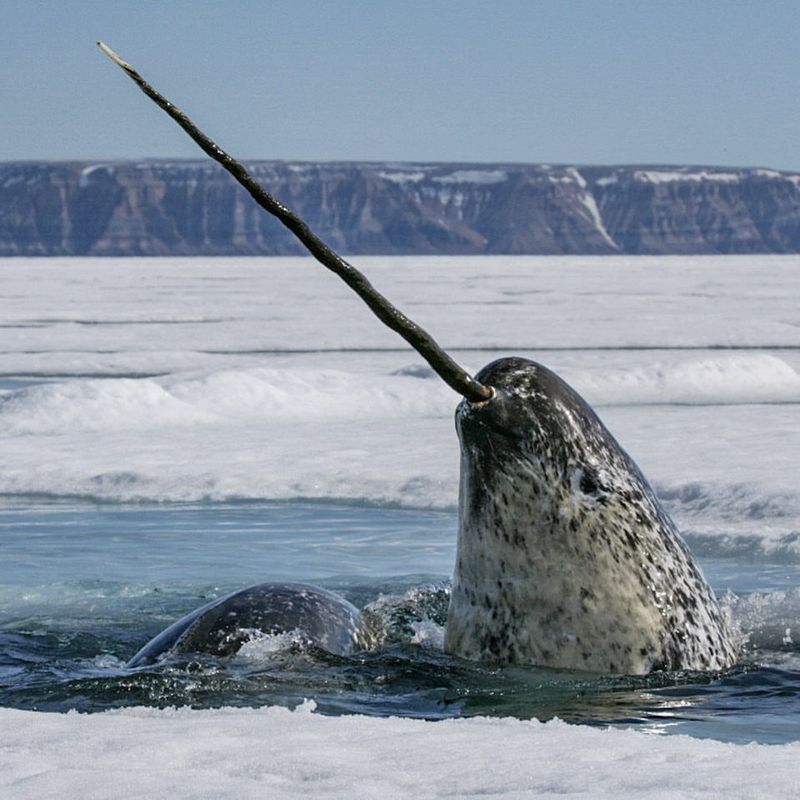
The narwhal, often dubbed the “unicorn of the sea,” glides gracefully through Arctic waters, its spiraled tusk piercing the icy surface. This elongated tooth can reach up to 10 feet long, adding an air of mystery and majesty to the whale.
Narwhals use their tusks for various purposes, from sensing environmental changes to competing for mates. These gentle giants live in pods, navigating through some of the harshest climates on Earth. Their enigmatic presence has inspired legends and folklore for centuries, symbolizing the mystical allure of the ocean’s depths.
The narwhal’s surreal appearance and mysterious lifestyle make it a compelling figure in the natural world. They’re living proof that even the most fantastical creatures can exist outside the realms of fiction.
8. Aye-Aye
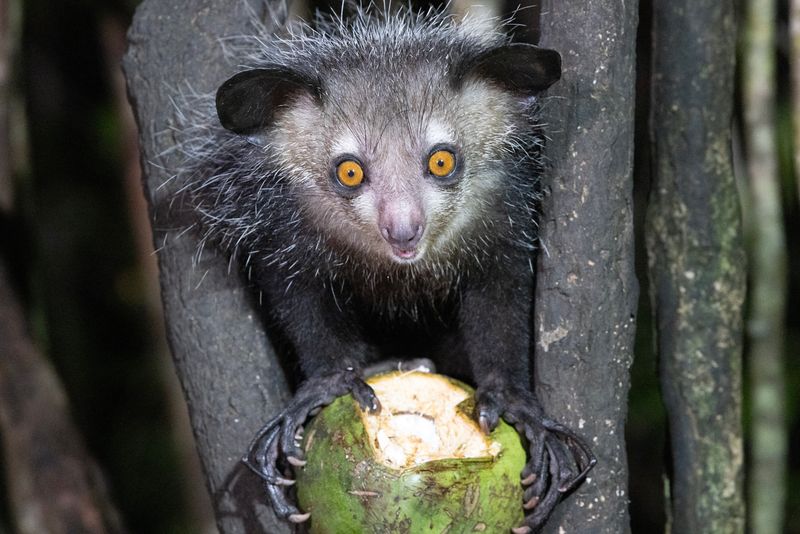
In the dense forests of Madagascar, the aye-aye prowls the night, its large eyes glowing in the darkness. Known for its distinctive elongated middle finger, this lemur uses its unique digit to tap on trees to locate insects.
The aye-aye’s appearance is a mix of cute and eerie, with its bat-like ears and rodent-like teeth. Despite its unusual looks, the aye-aye plays a vital role in controlling insect populations. Unfortunately, its bizarre appearance has led to misconceptions, resulting in it being labeled as an omen in local folklore.
Conservation efforts are underway to protect this misunderstood creature, showcasing the importance of preserving biodiversity. It’s a reminder that every animal, no matter how strange, has a role in the ecosystem.
9. Proboscis Monkey
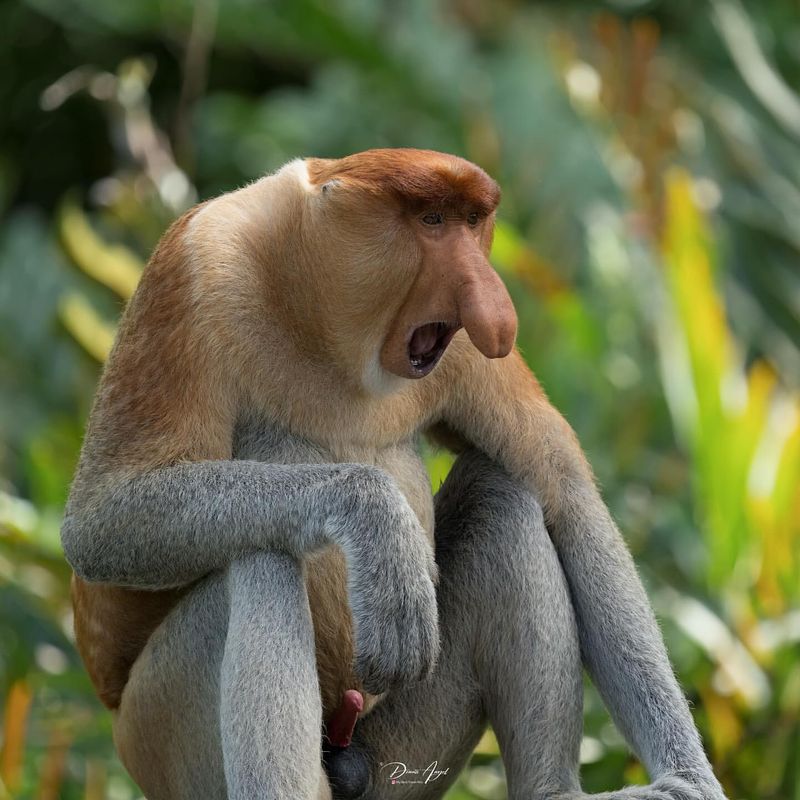
Swinging through the mangrove forests of Borneo, the proboscis monkey is a primate with an unforgettable profile. Its large, pendulous nose is not just an oddity but a tool for attracting mates and amplifying calls.
This monkey’s pot-bellied appearance adds to its comical charm, making it a favorite among wildlife observers. Its social nature and playful antics provide endless entertainment for those lucky enough to observe them.
Yet, these primates face threats from habitat loss and hunting. Conservation efforts are essential to ensure their survival, preserving not only a species but a unique piece of the jungle’s intricate tapestry. The proboscis monkey’s endearing traits and quirky appearance make it a standout among the planet’s primates.
10. Pangolin
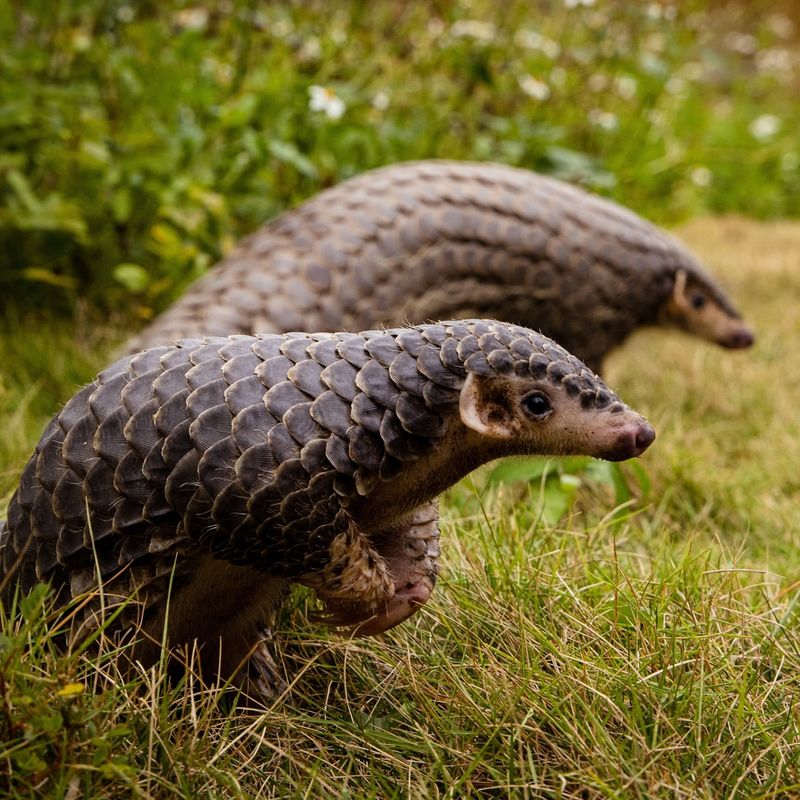
The pangolin, often likened to a walking pinecone, is a creature that captivates with its unique defense strategy. Covered in protective scales, it curls into a tight ball when threatened, a technique that deters most predators.
Found in parts of Africa and Asia, pangolins are solitary and nocturnal, using their keen sense of smell to locate ants and termites. Their tongues can extend to impressive lengths, making them efficient hunters of their favorite prey.
Sadly, pangolins are among the most trafficked mammals in the world, hunted for their scales and meat. Conservation efforts are critical to saving these remarkable creatures from extinction. The pangolin’s surreal appearance and plight highlight the urgent need for wildlife protection across the globe.
11. Saiga Antelope
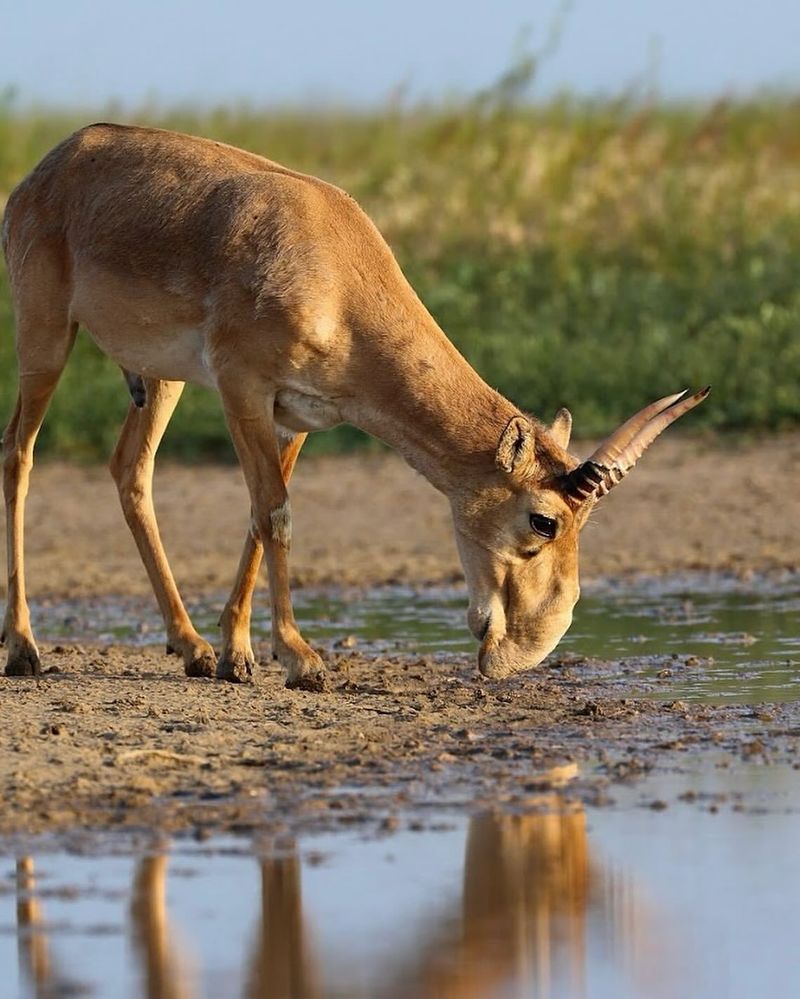
Roaming the vast steppes of Central Asia, the saiga antelope is a survivor of the Ice Age, known for its iconic bulbous nose. This unique nasal structure filters dust and regulates body temperature, adaptations crucial for survival in harsh environments.
These antelopes are known for their migratory patterns, covering great distances in search of fresh pastures. Despite their resilience, saiga populations have faced dramatic declines due to poaching and habitat loss.
Conservation initiatives aim to protect these ancient wanderers, emphasizing the importance of biodiversity preservation. The saiga’s distinctive appearance and evolutionary success story continue to fascinate scientists and nature enthusiasts alike.
12. Fossa
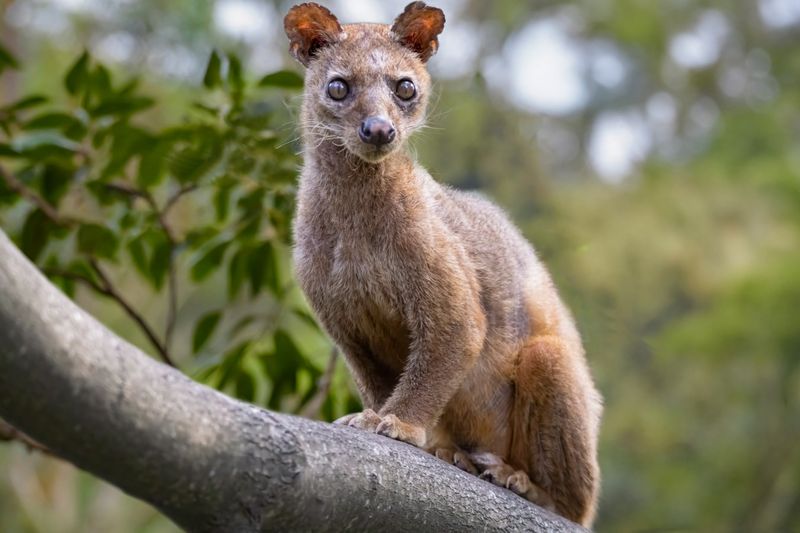
In the forests of Madagascar, the fossa reigns as the island’s top predator. With an appearance that blends feline elegance with the agility of a mongoose, the fossa is a unique carnivore. Its elongated body and tail assist in hunting lemurs, its primary prey.
Despite its importance in maintaining ecological balance, the fossa often goes unnoticed, overshadowed by Madagascar’s more famous residents. Efforts are underway to study and protect fossas, ensuring they continue to thrive in their natural habitat.
Their mysterious aura and hunting prowess make them a captivating subject for wildlife documentaries. The fossa’s presence is vital for the health of Madagascar’s diverse ecosystems.
13. Tardigrade
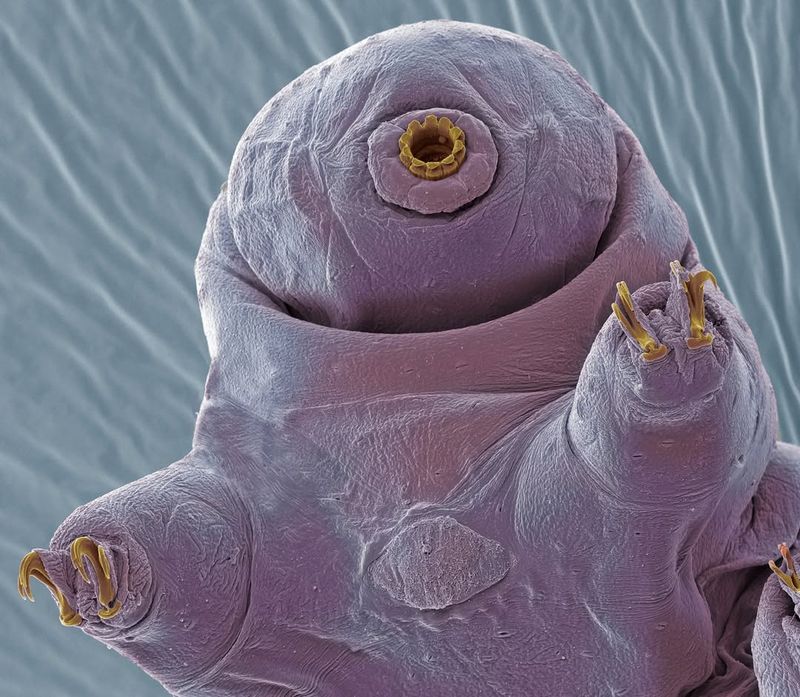
Known as water bears, tardigrades are microscopic creatures that have captured imaginations due to their resilience. These tiny animals can survive extreme temperatures, radiation, and even the vacuum of space.
Tardigrades inhabit diverse environments, from deep oceans to mountain tops, showcasing their adaptability. Their ability to enter a state of cryptobiosis allows them to withstand harsh conditions by almost completely drying out.
Scientists study tardigrades to understand their incredible survival strategies, hoping to apply these lessons to human technology. Their seemingly indestructible nature makes them a subject of fascination, proving that even the smallest creatures can possess astonishing capabilities.
They remind us that the world of microorganisms holds secrets yet to be fully uncovered.
14. Okapi
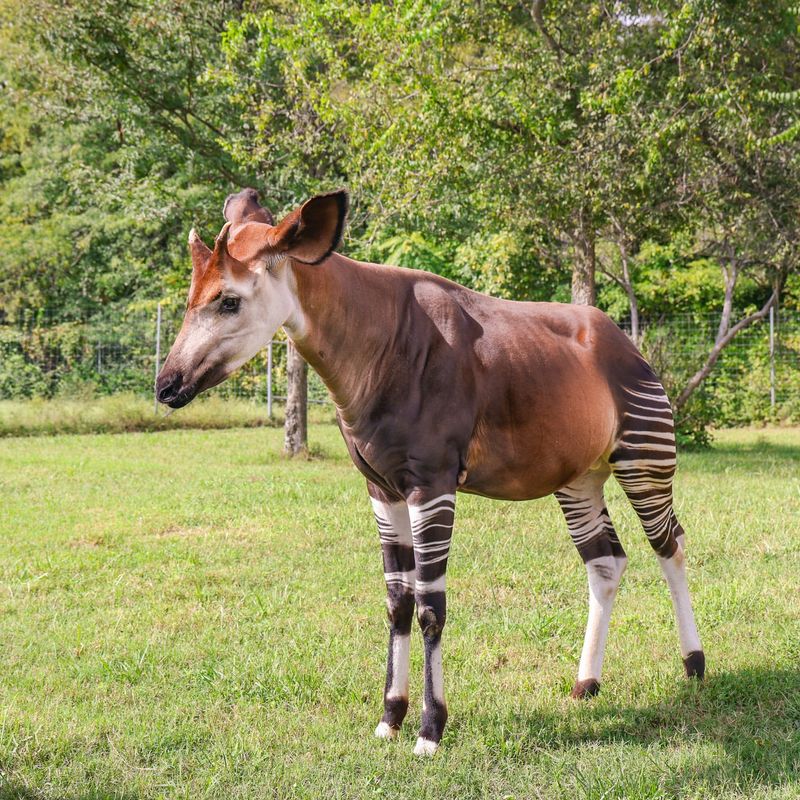
Deep in the rainforests of the Congo Basin, the elusive okapi roams, a creature that seems to be a patchwork of different animals. With legs striped like a zebra and a body reminiscent of a giraffe, the okapi is a true marvel.
Despite its striking appearance, the okapi was unknown to the western world until the early 20th century. Its secretive nature and dense habitat make it a challenging subject for researchers. Conservation efforts focus on protecting its shrinking habitat, ensuring the okapi continues to grace the jungles with its presence.
The okapi’s unique features and mysterious lifestyle make it a symbol of the diverse and hidden wonders of the natural world.

